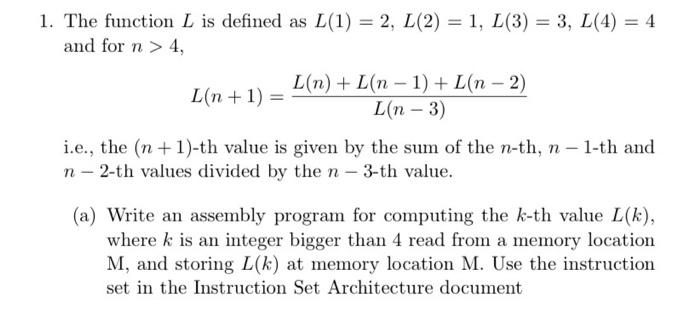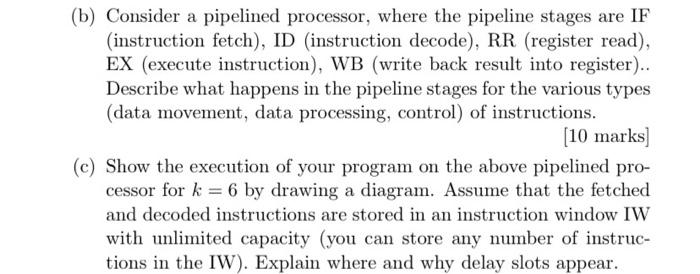Answered step by step
Verified Expert Solution
Question
1 Approved Answer
can any one help me to understand this question and how to solve? thank you in advance subject computer organisation and system software 1. The
can any one help me to understand this question and how to solve? 

thank you in advance


subject computer organisation and system software
1. The function L is defined as L(1) = 2, L(2) = 1, L(3) = 3, L(4) = 4 and for n > 4, L(n) + L(n-1)+L(n - 2) L(n+1) = L(n-3) i.e., the (n+1)-th value is given by the sum of the n-th, n - 1-th and n-2-th values divided by the n-3-th value. (a) Write an assembly program for computing the k-th value L(k), where k is an integer bigger than 4 read from a memory location M, and storing L(k) at memory location M. Use the instruction set in the Instruction Set Architecture document (b) Consider a pipelined processor, where the pipeline stages are IF (instruction fetch), ID (instruction decode), RR (register read), EX (execute instruction), WB (write back result into register).. Describe what happens in the pipeline stages for the various types (data movement, data processing, control) of instructions. [10 marks) (e) Show the execution of your program on the above pipelined pro- cessor for k= 6 by drawing a diagram. Assume that the fetched and decoded instructions are stored in an instruction window IW with unlimited capacity (you can store any number of instruc- tions in the IW). Explain where and why delay slots appear Step by Step Solution
There are 3 Steps involved in it
Step: 1

Get Instant Access to Expert-Tailored Solutions
See step-by-step solutions with expert insights and AI powered tools for academic success
Step: 2

Step: 3

Ace Your Homework with AI
Get the answers you need in no time with our AI-driven, step-by-step assistance
Get Started


